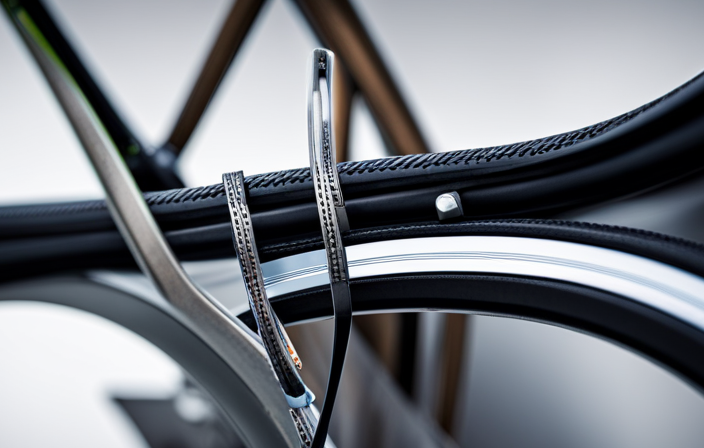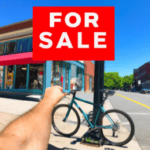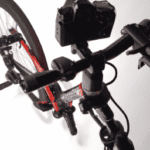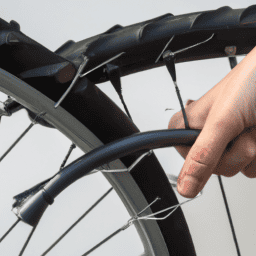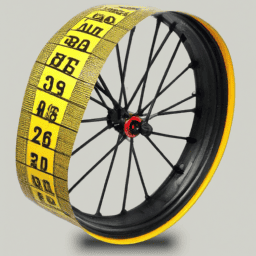Imagine this: you are gliding along a picturesque bike trail, feeling the wind in your hair, relishing the freedom and excitement that only a bicycle can offer.
But now, it’s time to part ways with your trusty two-wheeler. Don’t fret! In this article, I will guide you through the process of selling your bicycle with ease and confidence.
From assessing its condition to negotiating the price, I’ll share insider tips to help you find the perfect buyer and ensure a seamless transaction.
Let’s get started on your journey to selling success!
Key Takeaways
- Demonstrate value and dedication to customer service
- Ensure safety throughout the selling process
- Meet potential buyers in a safe location
- Allow test rides (if appropriate) and negotiate the price (if necessary)
Assess the Condition of Your Bicycle
Before you can sell your bike, you’ll need to assess its condition. Assessing value and checking the components are essential steps to ensure you get the best price for your bicycle.
Start by examining the frame for any cracks, dents, or rust. Inspect the wheels to ensure they are true and spin freely. Check the brakes, gears, and chain for any signs of wear or damage. Additionally, evaluate the tires for tread wear and any punctures. Take note of any necessary repairs or replacements that need to be made.
By thoroughly assessing your bicycle’s condition, you can accurately determine its value and make the necessary repairs to attract potential buyers. Now that you have assessed the condition, let’s move on to cleaning and making necessary repairs.
Clean and Make Necessary Repairs
First, make sure you clean the bike and take care of any necessary repairs. A well-maintained bicycle not only looks more appealing to potential buyers, but it also gives the impression that the bike has been taken care of and is in good working condition.
Here are some key steps to consider:
- Thoroughly clean the bike, removing any dirt or grime.
- Inspect the brakes, gears, and tires for any signs of wear or damage.
- Replace any worn-out parts such as brake pads or tires.
- Lubricate the chain and other moving parts to ensure smooth operation.
- Test ride the bike to ensure everything is working properly.
By following these bicycle maintenance steps, you can increase the value of your bike and make it more attractive to buyers.
Once your bike is clean and in good condition, you can move on to determining the right selling price for your bicycle.
Determine the Right Selling Price
To determine the right selling price for your bike, you should consider factors such as its age, condition, and market demand. Conducting market research is crucial in understanding the current trends and pricing of similar bikes. Look at online platforms, local bike shops, and classified ads to get an idea of what others are selling similar bikes for. This will help you set a competitive price that is attractive to potential buyers.
Additionally, consider your selling strategies. Will you sell it locally or online? Will you negotiate the price or set a fixed amount? These decisions can impact your selling price. By using effective selling strategies and conducting thorough market research, you can maximize your chances of selling your bike at the right price.
Now, let’s move on to the next step: taking high-quality photos.
Take High-Quality Photos
Capture the attention of potential buyers by taking high-quality photos that showcase the best features of your bike. Photography tips can make a significant difference in attracting buyers and increasing the chances of a successful sale.
Start by ensuring good lighting, preferably natural light, to enhance the colors and details of your bike. Clean your bike thoroughly beforehand to make it look its best. Take photos from different angles to give buyers a complete view of the bike’s condition. Focus on capturing the unique features that set your bike apart from others on the market. Highlight the brand, model, and any upgrades or special components.
By enhancing product features through high-quality photos, you will create a strong first impression and generate more interest from potential buyers.
To learn how to write an accurate and compelling description, continue reading the next section.
Write an Accurate and Compelling Description
Crafting an accurate and compelling description is essential to effectively showcase the unique qualities of your bike to potential buyers.
Highlight the bike’s features, including its brand, model, and any special components or upgrades.
Describe the bike’s condition accurately, mentioning any signs of wear and tear.
Use descriptive language to paint a vivid picture of the bike’s appearance, such as its sleek design or vibrant colors.
Emphasize the bike’s performance, mentioning its smooth ride, responsive brakes, or efficient gear shifting.
Include any additional accessories or extras that come with the bike, such as a lock or helmet.
By providing an accurate and compelling description, potential buyers can get a clear understanding of what makes your bike special. This will help you attract the right audience and increase your chances of making a successful sale.
Once you have crafted your description, it’s time to choose the right platform to sell your bicycle and reach a wider audience.
Choose the Right Platform to Sell Your Bicycle
After crafting an accurate and compelling description for your bicycle, it’s time to choose the right platform to sell it.
Online platforms have become increasingly popular, offering a wide reach and convenience for both buyers and sellers. Websites such as eBay, Craigslist, and Facebook Marketplace allow you to showcase your bicycle to a large audience, increasing your chances of finding a potential buyer.
Additionally, consider reaching out to local bike shops that may have a consignment program or a bulletin board where you can advertise your bicycle. These shops often have a dedicated customer base who are interested in purchasing pre-owned bikes.
By utilizing both online platforms and local bike shops, you can maximize your chances of selling your bicycle quickly and at a fair price.
Now, let’s move on to the next step: creating a detailed listing that will capture the attention of potential buyers.
Create a Detailed Listing
To effectively advertise your bike, it’s important to create a detailed listing that highlights its features and condition.
Start by determining the value of your bicycle based on its age, brand, and overall condition. This will help you set a competitive price that attracts potential buyers.
When creating your listing, be sure to highlight the unique features of your bike, such as a lightweight frame or high-performance components. Include clear and high-quality photos that showcase your bicycle from different angles.
Provide detailed information about its size, weight, and any recent upgrades or maintenance. By presenting your bike in a comprehensive and appealing way, you’ll increase the chances of attracting interested buyers.
Now, to further promote your listing on social media, let’s explore some effective strategies.
Promote Your Listing on Social Media
When promoting your listing on social media, you can easily reach a wider audience and increase your chances of finding interested buyers. Social media advertising strategies are highly effective in attracting potential buyers to your bicycle listing.
Start by creating eye-catching posts with high-quality images and compelling descriptions. Use relevant hashtags to maximize reach through online communities.
Join cycling groups on Facebook, Twitter, and Instagram to share your listing and engage with potential buyers. Actively participate in discussions and offer valuable insights to build credibility and trust.
Remember to respond promptly to inquiries, as this shows potential buyers that you are attentive and reliable.
By utilizing social media platforms and implementing effective advertising strategies, you can successfully promote your bicycle listing and connect with interested buyers.
Respond Promptly to Inquiries
Promptly responding to inquiries shows potential buyers that you are attentive and reliable. Effective communication is key when it comes to selling a bicycle. When someone is interested in your listing, they may have questions or need more information before making a decision.
By responding promptly, you demonstrate that you value their interest and are dedicated to providing excellent customer service. Be polite and professional in your responses, addressing their questions and concerns in a clear and concise manner. This will help build trust and increase the likelihood of a successful sale.
Once you have established a good line of communication, you can move on to the next step of meeting potential buyers in a safe location.
Meet Potential Buyers in a Safe Location
Meeting potential buyers in a safe location is essential for ensuring a secure transaction. When it comes to selling a bicycle, safety should always be a top priority. To engage potential buyers and provide a sense of security, consider the following:
-
Choose a public location: Opt for a well-lit area with plenty of foot traffic. This will not only make potential buyers feel safer but also deter any fraudulent activity.
-
Research buyer preferences: Some buyers may prefer meeting at a local cycling shop or a park with cycling trails. Knowing their preferences can help build trust and convenience.
-
Bring a friend: Having a companion with you during the meeting can provide an extra layer of security and peace of mind.
-
Communicate clearly: Make sure to clearly communicate the meeting location and any specific instructions to the potential buyer beforehand.
By following these guidelines, you can ensure a safe and successful meeting with potential buyers.
Now, let’s move on to the next step: allowing test rides (if appropriate).
Allow Test Rides (if appropriate)
To ensure a successful transaction, it’s important to allow potential buyers to test ride the bike if they wish. Not only does this give them the opportunity to get a feel for the bicycle, but it also shows that you are confident in its quality.
When allowing test rides, safety should be a top priority. Make sure the potential buyer wears a helmet and rides in a safe location, away from traffic or other hazards.
Additionally, it’s essential to discuss test ride liability with the buyer. Have them sign a waiver that releases you from any responsibility for accidents or injuries that may occur during the test ride.
By taking these precautions and being transparent about liability, you can provide a positive test ride experience for potential buyers.
Now, let’s move on to negotiating the price (if necessary).
Negotiate the Price (if necessary)
If you’re open to it, you can negotiate the price with potential buyers. Negotiation strategies can help you secure a fair deal while still maximizing your profit. One effective strategy is to set a minimum price in your mind and be firm about it. This ensures that you don’t settle for less than what you believe the bicycle is worth. But remember to be flexible and open to reasonable offers as well. When negotiating, it’s important to highlight the value and unique qualities of your bicycle to justify your asking price. Additionally, creating a sense of urgency by mentioning other interested buyers can motivate potential buyers to meet your price. By utilizing these negotiation strategies, you can successfully sell your bicycle at a price that satisfies both you and the buyer. Now, let’s move on to completing the sale transaction.
Complete the Sale Transaction
Once you have agreed on a price, you can proceed to finalize the sale transaction. To ensure a smooth selling process, it is important to consider various payment methods that will cater to the buyer’s preferences.
Here are a few options to choose from:
- Cash: The most straightforward method, allowing for an immediate exchange of funds.
- Bank transfer: Provides a secure and convenient way to transfer funds electronically.
- PayPal: A popular online payment platform that offers protection for both the buyer and seller.
- Venmo: A mobile payment app that allows for quick and easy transactions.
- Payment plan: If the buyer prefers to pay in installments, consider setting up a payment plan.
By offering these diverse payment options, you can accommodate different buyers and increase the chances of a successful sale.
Once the transaction is complete, it’s time to transfer ownership and provide the necessary documents for a seamless handover to the new owner.
Transfer Ownership and Provide Necessary Documents
Make sure to transfer ownership of the item and provide all necessary documents for a seamless handover to the new owner. When completing the sale transaction, it is important to follow the transfer process to ensure a smooth transition.
First, gather all the required documents, such as the original purchase receipt, maintenance records, and any warranties. These documents will provide the new owner with confidence in their purchase and protect you legally.
Next, fill out a bill of sale or transfer of ownership form, clearly stating the terms of the sale, including the purchase price, date of transfer, and any additional agreements.
Finally, both parties should sign the documents, acknowledging the transfer of ownership. With all the necessary paperwork in place, you can move on to the next step of following up with the new owner and asking for feedback on their experience.
Follow Up and Ask for Feedback
After completing the sale transaction, it’s important to follow up with the new owner and ask for their feedback on their experience. This not only shows that you care about their satisfaction but also provides an opportunity to improve your selling strategies. By asking for reviews, you can gather valuable insights and learn how to enhance your future sales. To make the process easier, consider using a simple and concise feedback form. This will allow the new owner to provide their thoughts and suggestions in a structured manner. By incorporating a 2 column and 3 row table into the form, you can add a level of sophistication to the process. Here’s an example of how the table could look:
| Feedback Questions | Rating (1-5) |
|---|---|
| Overall experience | |
| Communication | |
| Condition of the bike |
By actively seeking feedback, you demonstrate your commitment to customer satisfaction and continuous improvement. This will not only help you sell bicycles more effectively but also build a strong reputation in the market.
Frequently Asked Questions
Can I sell my bicycle without cleaning and making repairs?
I highly recommend cleaning and making necessary repairs before selling your bicycle. It will greatly improve your chances of selling it quickly and at a higher price. Customers appreciate a well-maintained and functional bike.
How do I determine the right platform to sell my bicycle?
Determining the right platform to sell my bicycle depends on my preferences. Online platforms offer a wider audience, while local options allow for personal interactions. As for pricing strategy, I can choose between a fixed price or negotiable to attract potential buyers.
Should I allow potential buyers to take test rides?
Allowing potential buyers to take test rides can help build trust and increase the chances of a sale. However, it’s important to set clear guidelines and ensure the buyer’s safety. Additionally, setting a fair asking price for your bicycle involves considering its condition, market value, and any added features.
What documents do I need to transfer ownership of the bicycle?
To transfer ownership of the bicycle, you’ll need the title or proof of purchase, a bill of sale, and any relevant registration or transfer forms. Don’t worry, I’ll guide you through the ownership transfer process smoothly.
How do I ask for feedback from the buyer after completing the sale transaction?
To ensure a positive buyer experience, I recommend reaching out to the buyer after completing the sale transaction. Request feedback to evaluate their satisfaction and address any concerns promptly. Their input is invaluable for improving future transactions.
Conclusion
In conclusion, selling a bicycle requires careful assessment, thorough cleaning, and accurate pricing.
By taking high-quality photos and writing a compelling description, potential buyers will be enticed.
Negotiating the price, completing the transaction, and transferring ownership are crucial steps in finalizing the sale.
Follow-up with the buyer and ask for feedback to ensure customer satisfaction.
Remember, selling a bicycle is like riding the wind, seizing the opportunity to embark on a new adventure.

